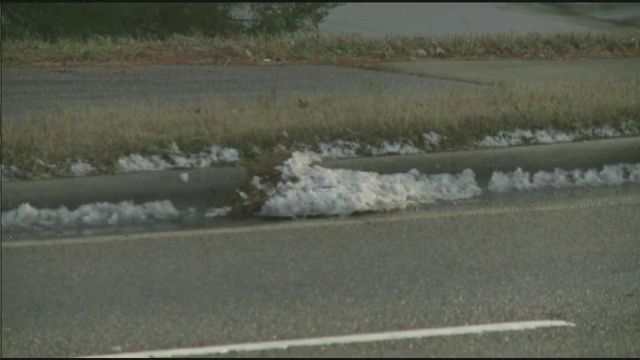Fog, icy patches could pose road problems Sunday morning
Any leftover moisture from Friday's wintry mix was expected to re-freeze on Triangle roadways as temperatures dropped after sundown on Saturday, so icy patches and dense fog could pose problems for Sunday morning drivers, WRAL meteorologist Mike Moss said.
Posted — Updated"We've got some fog out there, some cold temperatures, so you'll have to watch for poor visibility if you're driving around early today," Moss said. "You also have to watch for any frozen spots that are still in places on the roads."
Much of the snow, sleet and freezing rain that fell Friday melted away under Saturday's sun, but some slick spots remained Sunday morning, especially on secondary roads.
Sunday will again be chilly, with temperatures rising only into the low 40s.
For those who have no choice but to drive in icy conditions, authorities offered the following guidelines.
- Clogged roadways can make it difficult for snow-removal crews and emergency personnel to do their jobs.
- Make sure your cell phone is fully charged.
- If you don't have a garage or carport, parking near a wall or building can protect your car from the cold to some degree.
- Check the power levels and water in your car battery. If your car is not housed in a garage, it is crucial to have a heating system for your engine if there are extremely low temperatures for long periods.
- Keep your gas tank filled. Doing so will keep condensation from getting in the tank. Condensation can contribute to fuel line freeze-up.
- Make sure your exhaust pipe is not clogged with mud or snow.
- Check the antifreeze levels in your car and the firmness of hoses.
- Let the vehicle run for a few minutes before driving. This will allow the transmission and power steering fluids and motor oil to circulate.
- If you must drive on snow- or ice-covered roadways, lower your speed. Driving at the regular speed limit will reduce your ability to control the car if you begin to slide. Leave plenty of room between you and other vehicles.
- Don’t use cruise control on icy roads.
- Allow more time for braking when visibility is poor or roads are slick.
- Stay calm if you start to skid.
- Wear multiple layers of thin clothing, instead of a single layer of thick clothing to stay warm. You will be warmer, and as the temperature changes, you can easily remove layers to remain comfortable.
- If conditions worsen and you can no longer drive safely, pull off the highway. Stay calm, and remain in your vehicle. Do not set out on foot unless you can see a nearby building where you know you can take shelter.
Keep an emergency kit in each vehicle for use if you get in a crash or are stuck in wintry weather.
Each car should have:
- Jumper cables and flares
- Spare tire
- Hazard triangle/road flares
- Flashlight with extra batteries,
- Tire repair kit and pump
- A bag of cat litter (for tire traction)
- Windshield scraper and brush
- Extra clothing warm clothing or a blanket
- First aid kit
- Maps
- Water
- Nonperishable, high-energy foods such as granola bars.
- Use cellular phones sparingly, emergency personnel cannot communicate if the channels are clogged with unnecessary chatter.
- Stay calm in a skid
- Make sure everyone is safe. Check for injuries and make sure no one needs medical assistance.
- Turn on your hazard lights or light flares, and pull off the highway, if possible.
- Call 911 to report the incident.
• Credits
Copyright 2024 by Capitol Broadcasting Company. All rights reserved. This material may not be published, broadcast, rewritten or redistributed.






